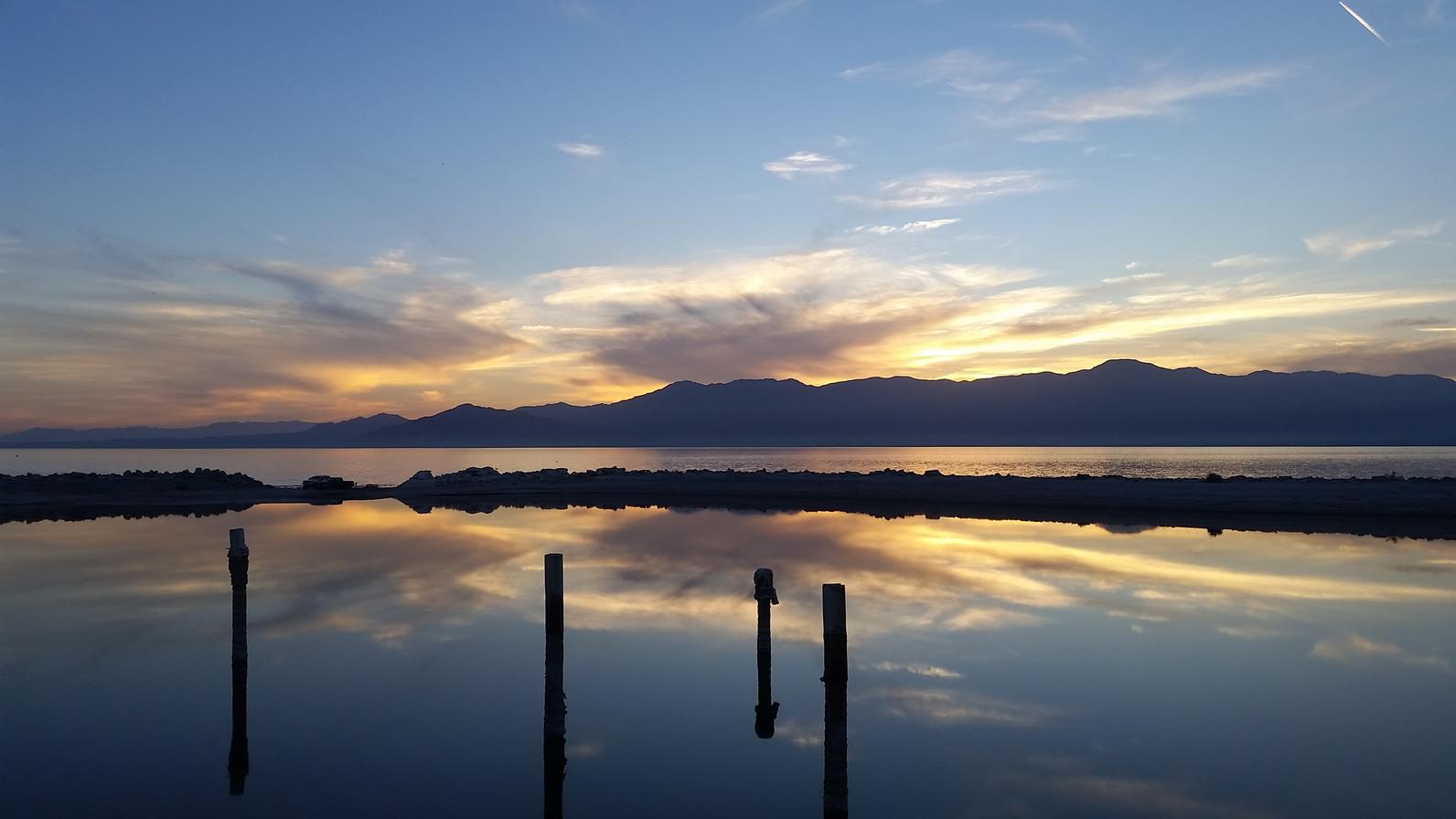
Ever since the Salton Sea was created – that is, in its current iteration after 1905 – it has been in a state of fluctuation. But for the birds and the people that inhabit the region, the changes about to happen at the Sea are dramatically unlike those that have come before it.
While at the Sea this weekend for an Audubon event, it occurred to me that after having visited and birded at the Sea many times over the past 10 years, I was having to say goodbye to the Sea as we have known it. The amount of water flowing into the Sea, primarily as agricultural runoff, will be reduced by 40%, starting in 2018.
While exploring the Sea this weekend with fellow Auduboners, I could already see the changes, harbingers of what’s to come. In just the few months since my last visit, the Sea had receded in many areas, wetlands were getting choked with vegetation, and there were vast areas of exposed playa and muddy shoreline. Birds were plentiful, but not like in the past. We saw hundreds of White Pelicans (there should be thousands), but we didn’t see them fishing. We did observe one lucky Brown Pelican catch a very large tilapia.
The shoreline was scattered with shorebirds – the type of birds that will likely continue to survive at the sea, able to catch salt-tolerant insects along the water’s edge. Eared Grebes, once the most numerous bird at the Sea, numbering in the millions, were nowhere to be seen. Ruddy Duck numbers, however, seemed quite impressive. There has been a recent hatch of water boatman, a type of aquatic insect, and the water sparkled with hatching bugs and our cars were quickly covered with them when we parked along the western shore. Some waterbirds will likely take full advantage of this hatch. We were told by a local aquatic scientists that this hatch of insects is because there aren’t enough fish left to eat them.
Unless new habitat is created that supports fish and fish-eating birds, we will see the Sea transition to only those bird species that eat insects and tolerate a more saline environment. And then it will eventually become a place where very few species can survive as the salinity continues to rise.
This past weekend the Sea was still spectacular – water seemed to drop off into the distant horizon, the air was clear, and the view of the surrounding mountains made for a magnificent backdrop, as well as a stunning sunset. This was a good way to see the Sea for the last time – soon the Sea will live up to the reputation often quoted and captured by reporters, one of abandonment, dead fish, and little bird life.
There is a way to prevent this from happening however – the State needs to act on its promises and build habitats on the explosed playa so the birds still have a place to stop during their long migrations, and air quality is secured for the many residents who are going to suffer from the effects of exposed playa and the dust storms that will be generated.
The Sea will change – there really is no way to stop that, but there is a way to control that change to make sure that residents and birds do not suffer in the process.
Andrea Jones is director of bird conservation for Audubon California.
By Andrea Jones
Monthly Giving
Our monthly giving program offers the peace of mind that you’re doing your part every day.




